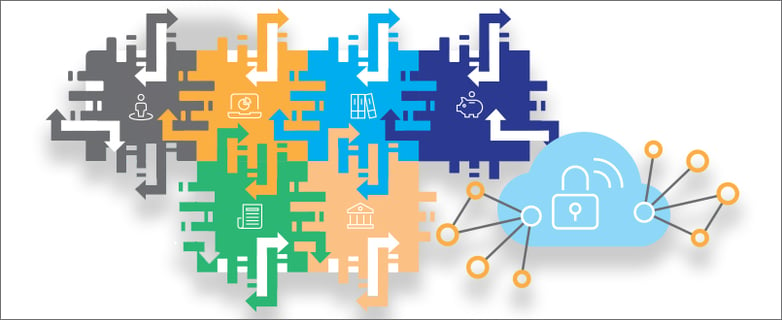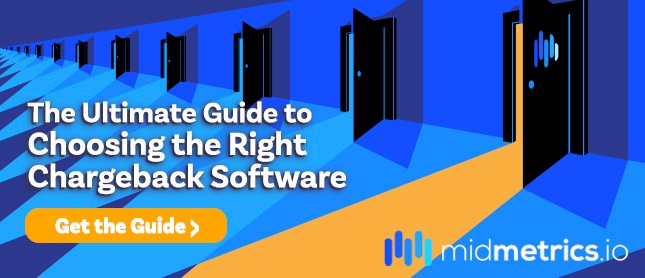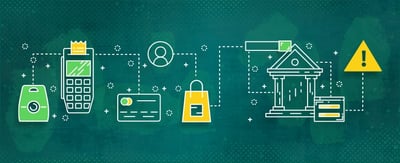
6 Non-Negotiables for Your Next Chargeback Software
By Brian Radford on Feb 9, 2021
Many merchants overlook chargebacks as an unfortunate yet inevitable business expense, but the truth is less palatable. A chargeback costs far more than just the dollar value that appears on a bank statement—it results in numerous costs and lost investments, from shipping to marketing to chargeback fees from payment processors. This leads to a huge dent in any retailer's bottom line, often totaling more than twice the amount returned to the customer after a successful dispute.
As if the financial consequences of chargebacks weren't bad enough, merchants also face the possibility of their payment processors banning them. Almost all card networks and payment solutions track the number of chargebacks filed against their clients and set an upper threshold. If retailers surpass this benchmark consistently, they risk having their account closed. In some cases, merchants can be banned from creating a new account for five years.
With digital and card payments becoming increasingly more common, the chargeback problem isn't going to disappear any time soon. The only way to minimize the worst effects of chargebacks is to stay on top of them. If a merchant knows how many chargebacks their customers are filing, they can figure out which disputes to fight against—and, most importantly, ensure that they're not reaching their payment provider's limits. To do this successfully, chargeback software is essential.
Finding the Right Chargeback Software
Ultimately, staying on top of chargebacks is all about managing and analyzing data. Without paying serious attention to the figures, there's no way of knowing which disputes are worth fighting or tracking each case over time. There's just one problem: When attempted manually, examining vast amounts of data is hugely time-consuming at best, and downright impossible at worst.
Despite the necessity of tracking chargebacks, it's not feasible for most merchants. Staff members would need to be both chargeback defense specialists and data scientists to manage the job successfully. A far simpler option is using sophisticated, reliable chargeback software.
Software can effortlessly make sense of chargeback data by sorting it into charts or reports that staff will understand, and automate processes like alerts and dispute tracking. This frees up valuable working hours and resources while safeguarding the company's merchant account and revenue.
Here are the primary benefits of an effective chargeback management software:
-
Simplification
-
Merchant account protection
-
Reporting
-
Tracking across multiple accounts
-
Security
-
Billing process transparency
Let's look at each aspect in further detail.
Simplify Your Chargeback Management Process
Monitoring chargebacks isn't a once-a-month (or even once-a-week) activity—for maximum effectiveness, disputes must be managed on a daily basis. This might sound daunting, but chargeback software makes it easy by offering everything merchants need in one platform. Typical features include tracking disputes, answering notifications and alerts, preparing for representment, carrying out dispute prevention strategies, and updating accounts.
Chargeback software should also connect with other business software through API connectivity, including CRM and payment processors. This makes it possible to access transaction data directly (to use for representment) and add chargeback information to CRM records, along with other useful functions.
All in all, this facilitates an integrated platform where merchants can save time by handling all chargeback-related activities in one place.
Protect Your Merchant Account(s)
As mentioned already, merchants with a high chargeback rate risk losing their merchant accounts. Generally, a chargeback ratio (calculated as the total number of chargebacks over the total number of transactions) of 1% or more will result in a bank or card network flagging the account. A consistently high rate can lead to a merchant ending up on the Terminated Merchant File (TMF), a specific type of blacklist.
Yet, to accept debit or credit cards, a merchant account from an acquiring bank is a necessity. Without one, most retailers would struggle to stay afloat thanks to the current focus on card payments and online transactions.
Retailers should therefore make the protection of their merchant accounts a top priority. Although there's no way of preventing chargebacks entirely, the right software at least allows merchants to stay on top of their chargebacks by giving them automated warnings, providing real-time analytics, and recommending actions that will keep their chargeback rate low.
Provide Useful & Insightful Reports
Chargeback software doesn't just provide data—it helps merchants to make sense of it.
Fraud and errors can lead to unexpected chargeback spikes at any time. Software that provides summaries at the end of the month can't give you an insight into emerging chargeback issues—but real-time monitoring, up-to-date figures, and daily reporting can.
When a situation is still unfolding, reports can provide a clear picture of what's happening and provide the insights needed to take action, preventing further chargebacks and protecting the merchant account.
A chargeback software solution that takes a business's specific needs into account can generate reports that are organized and formatted to be easily read, shared, and understood within an organization. This makes it easier for merchants to spot problems and apply human intelligence to solve them.
Track Performance for One or Multiple Merchant Accounts
Keeping on top of chargebacks for a single merchant account is difficult enough, but trying to manage disputes across multiple accounts is beyond challenging—it requires constantly logging into various portals. Yet this is common among merchants that own a few brands, storefronts, or subsidiaries.
Fortunately, there are chargeback software options that integrate the information from each account into one interface. This makes it far easier to organize crucial information and access data whenever needed without switching between different accounts or platforms. It's generally possible to either view the data from all accounts on one screen or to hone in on a single account's information while hiding the others.
Secure
Although most merchants prioritize efficiency and revenue, there's another very important aspect to consider: Security. Merchants are responsible for safeguarding their customer data, and few areas are more sensitive than chargeback-related information. Good software has the security protocols needed to protect it, while flimsy procedures could have vulnerabilities. When using third-party APIs and platform servers, the information put on the software is particularly vulnerable.
Besides, it's not just customer data that merchants need to worry about, but also information concerning marketing plans, company financials, products, and errors. No merchant should start using a chargeback software without knowing and understanding the provider's data security practices—and checking if there have been any past breaches or non-compliance problems with card network regulations.
Transparent Billing Process
Good chargeback software doesn't come for free, but that doesn't mean merchants should blindly accept whatever cost they're presented with. Understanding the software's features and why it costs what it does is essential.
A common rule of thumb for purchasing new software is to compare its cost with the money it will bring in. However, this doesn't quite apply to chargeback software since it can only protect revenue rather than create it—so it's more important than ever to know why the cost is justifiable.
To do this, merchants should ask the provider for a sample invoice and ensure they understand all the costs involved, including upfront fees—and the features or services they correspond with. Then, it becomes easier to weigh the value provided against current business procedures. How much employee time will software save, and to what extent will it help to streamline chargeback representment or chargeback prevention?
If the software provider's billing process lacks transparency and there's no clear evidence of high performance, it's probably best to look elsewhere.
The Right Experts with the Right Chargeback Software
Now that you know what to look for in a chargeback software, you might be wondering how MidMetrics measures up to these standards. The first thing to know is that MidMetrics is an entire toolbox of programs designed to get at the heart of a chargeback problem and start generating solutions: Management Dashboards, In-Depth Analytics Tools, On-Demand Reports, and Integrations, all working together to give you a comprehensive platform for monitoring all of your merchant accounts and chargeback activity.
MidMetrics simplifies chargeback management by combining chargeback and data services into a single platform. As an all-in-one solution, MidMetrics allows merchants to monitor their alerts, notifications, refunds, and decline/acceptance rate in real time from a single location. With customizable analytics tools, MidMetrics provides merchants with insightful and actionable data reporting.
MidMetrics is designed to be easy implement and begin using without a lot of IT work on the merchant's end. It integrates via API with payment processors and gateways, and CRM systems. When required, it can log in with secure credentials to bank and credit card providers that allow direct connections.
For reporting, MidMetrics automatically identifies and aggregates relevant information and can normalize data pulled in from different sources in varying formats. MidMetrics reports present chargeback data in a highly visual form designed to deliver insights and allow merchants to take quick action.
With all of these valuable resources united under a single platform, you can fight and prevent chargebacks much more efficiently. Rather than assemble a hodgepodge of tools, integrations, and analytics solutions from a variety of sources—or trying to cook them up from scratch in-house—you can make one purchase and get a full suite of proprietary chargeback management tools and integrations from MidMetrics.
Want to see MidMetrics in action? Book a demo with one of our chargeback specialists today.
Chargeback software can effortlessly make sense of chargeback data and automate processes like alerts and dispute tracking. But how do you choose the right chargeback software for your business? Download The Ultimate Guide to Choosing the Right Chargeback Software today!



